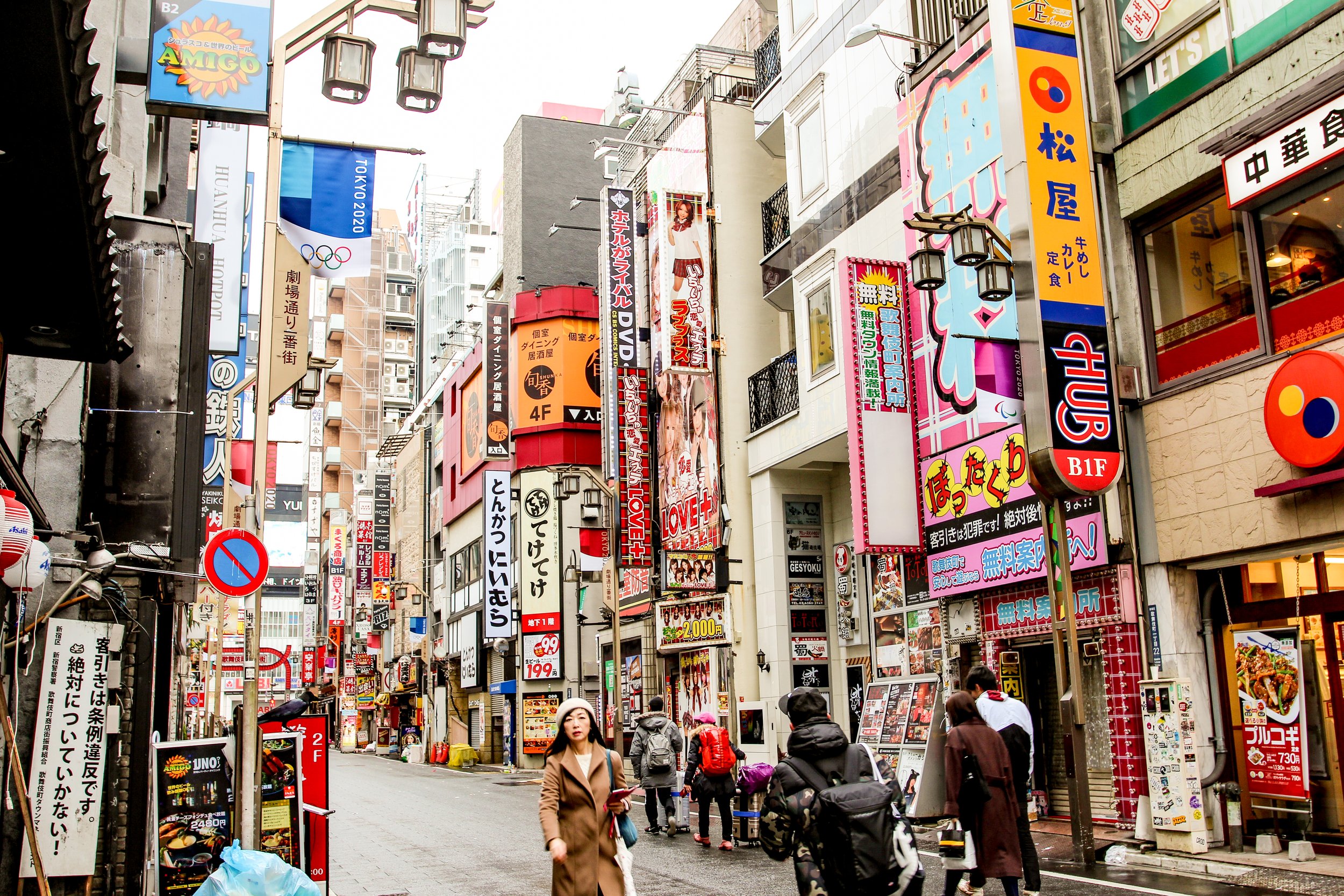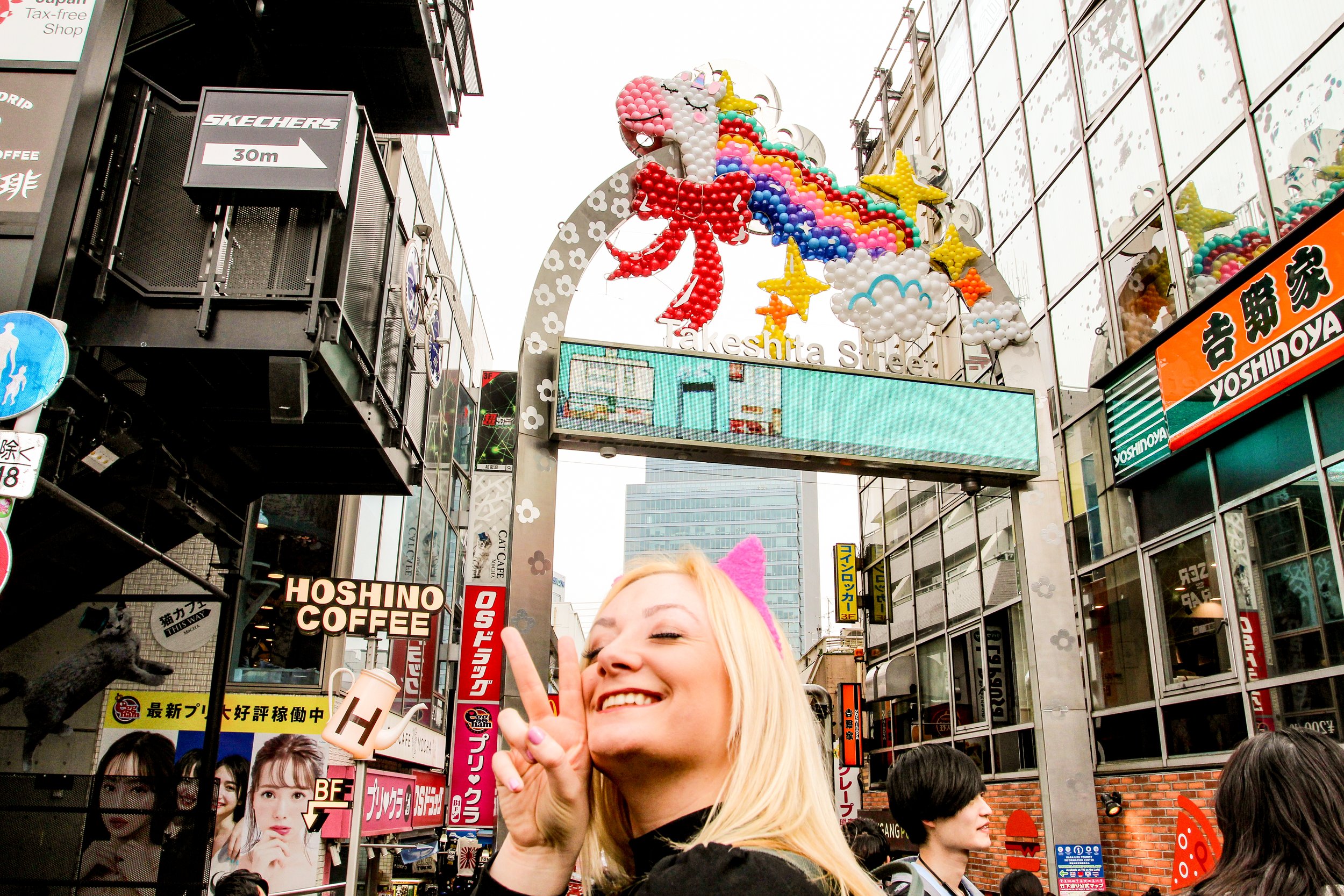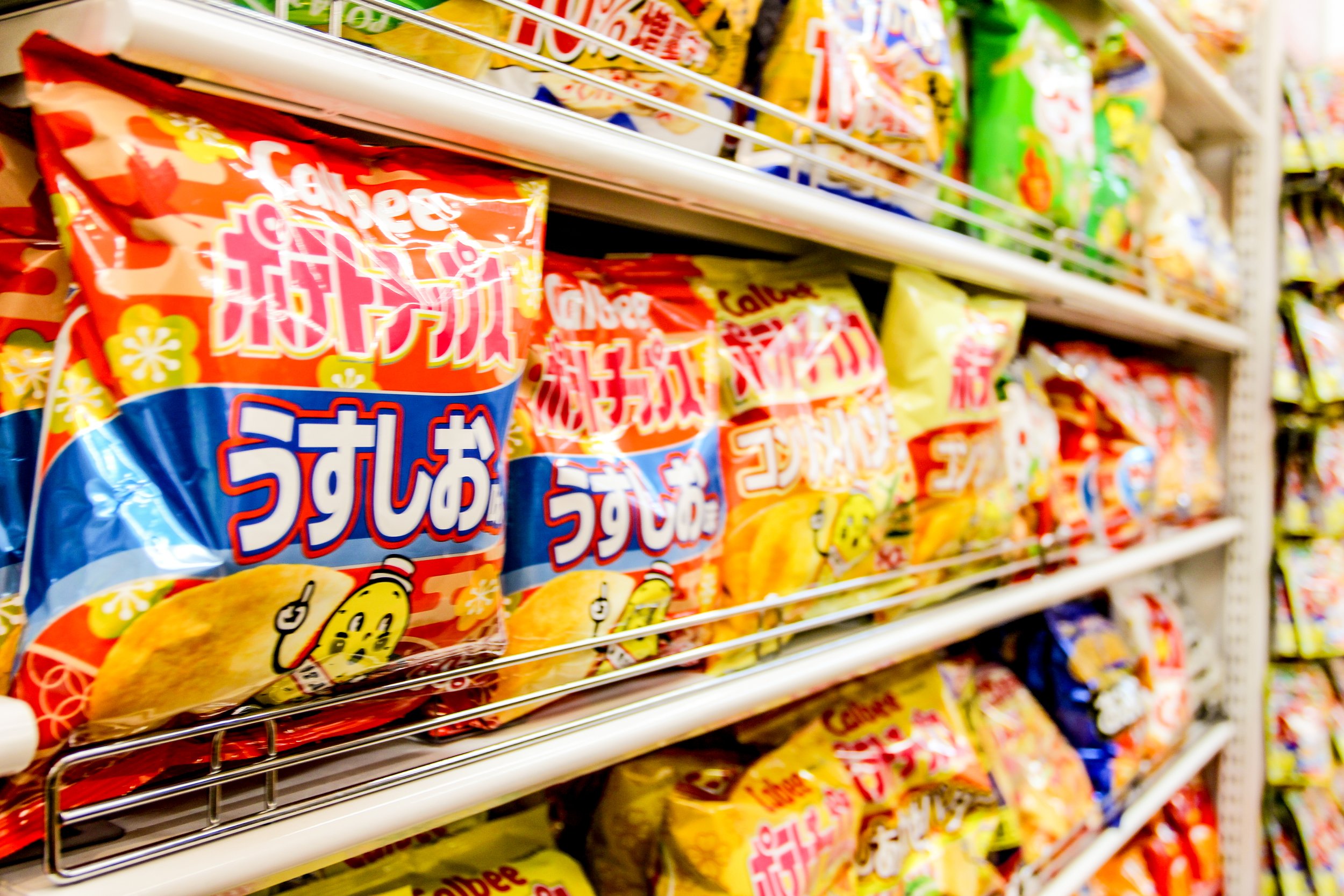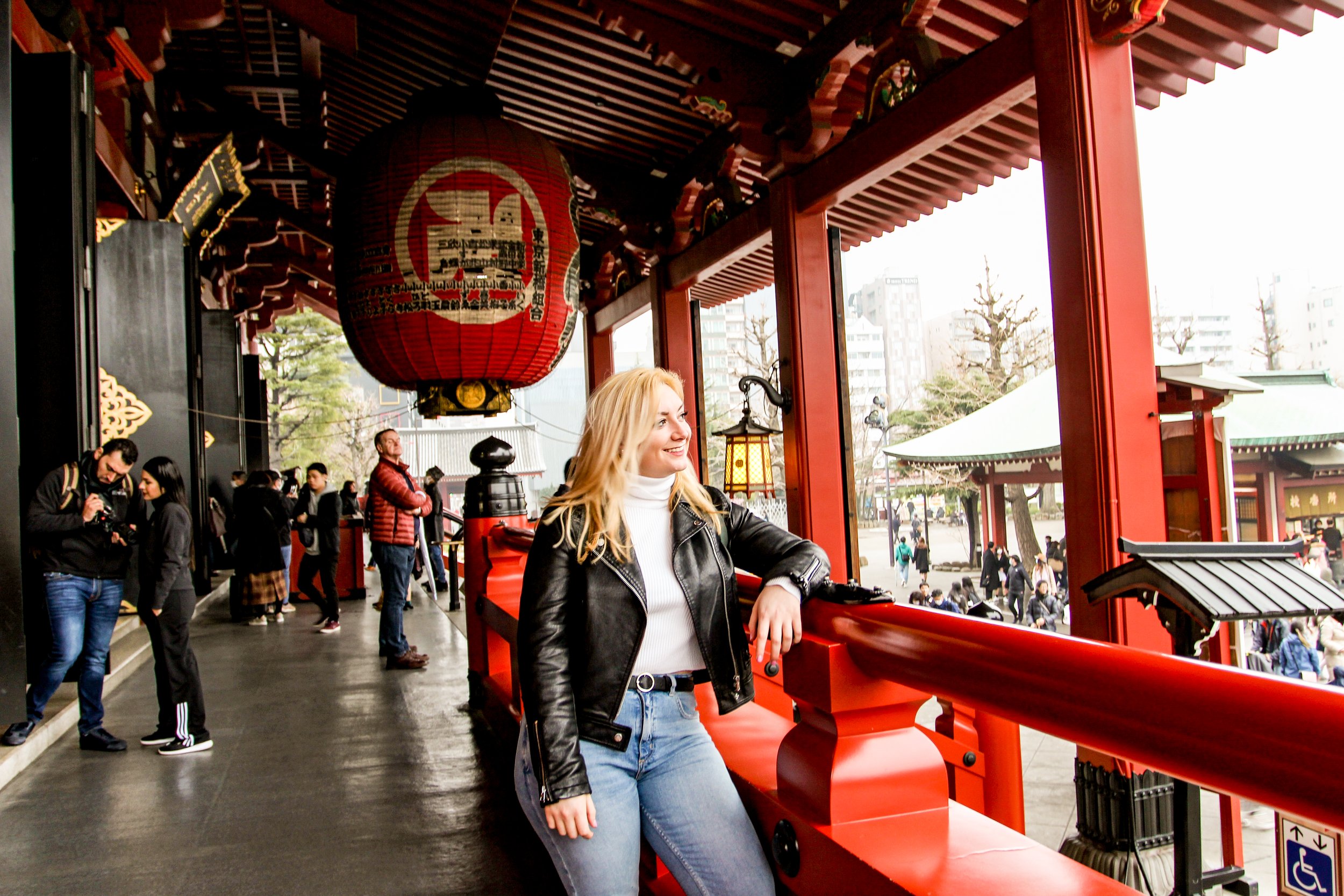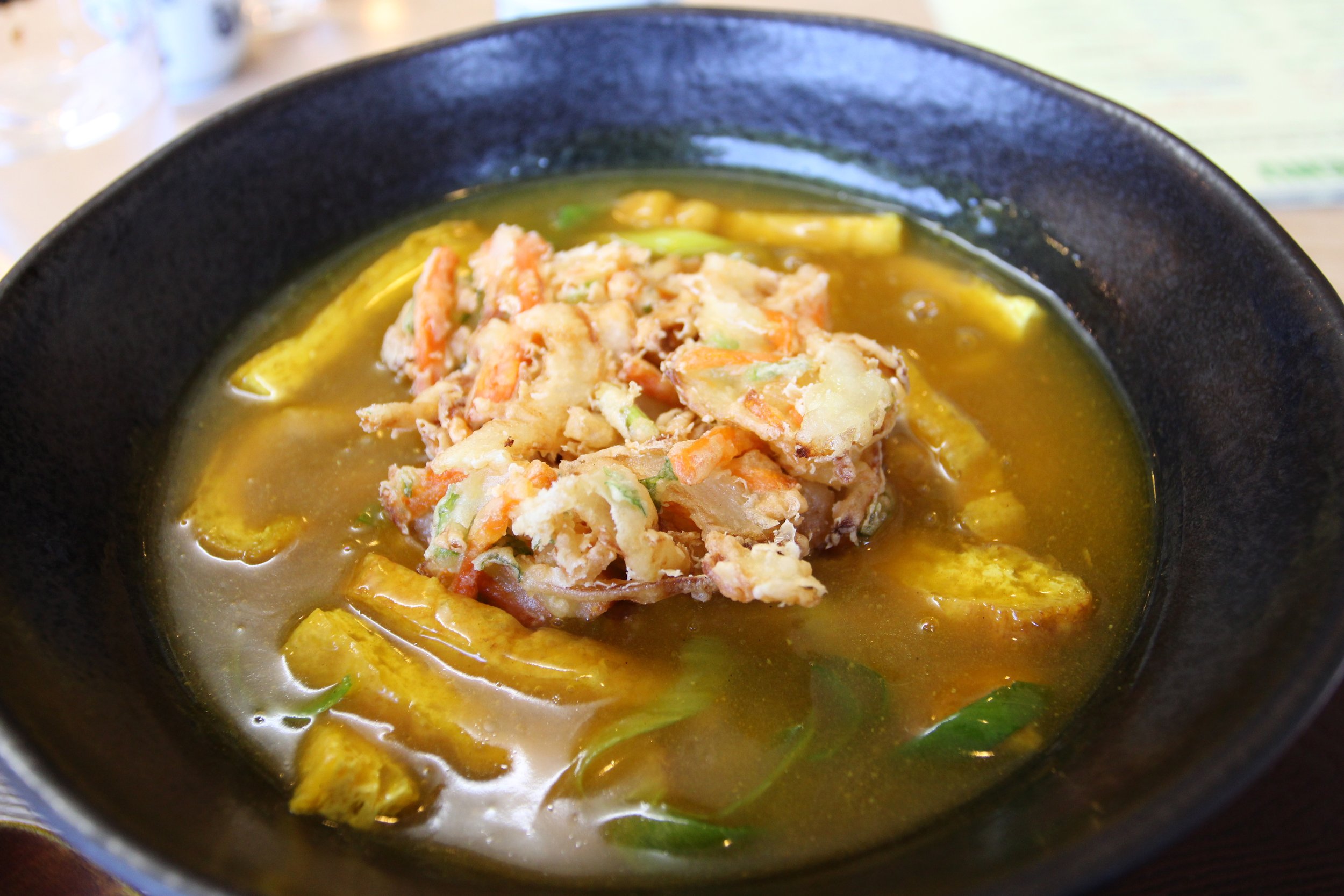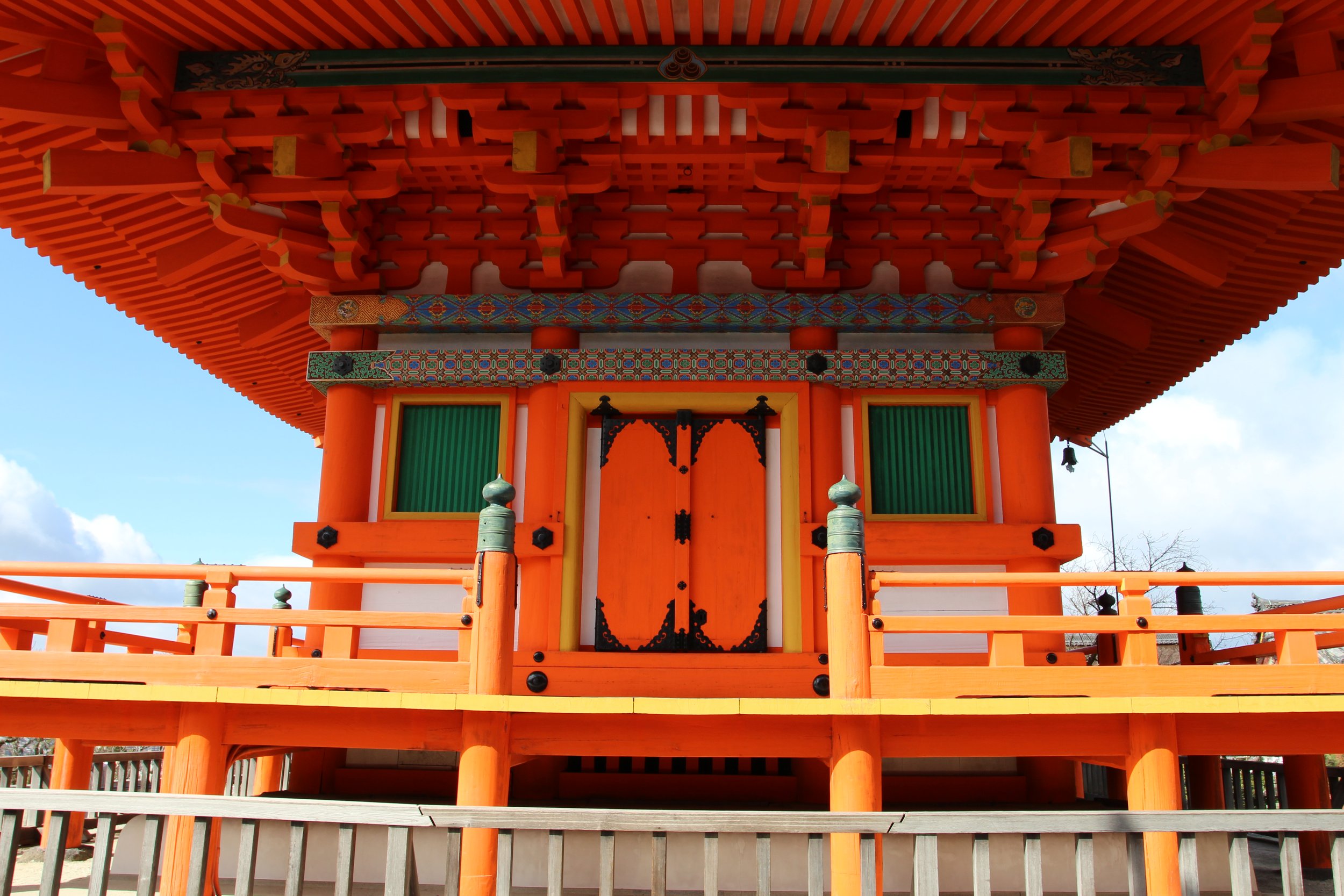Visiting 3 Cities in Japan in 7 Days | The Best Itinerary for First-Timers
If Japan isn’t on the top of your bucket list already, it should be. This gorgeous country is filled with everything from bustling cities to serene temples filled with incredible people that will make your trip even more worth-while. The food, scenery, and ancient culture make Japan one of the most special places you could visit in your lifetime. One week is not enough time to see Japan in its entirety, but it is a good way to scratch the surface of Japanese heritage and experiences, Follow this one-week itinerary to see as much as you can in such a short time. Trust me—it’ll go by fast!
Pre-Trip/Flight to Japan
Flights to Japan can be quite tricky. With long layovers and insane time differences if you are coming from the US, getting to Japan is logistically easy, but not easy on your well-being. Find a flight that gets you from A to B in the shortest amount of time with the least amount of stops that also don’t break the bank. Check out Scott’s Cheap Flights—which is an email mailing list that notifies you of the cheapest flight alerts. We found round-trip flights from Philadelphia, PA to Tokyo, Japan for $713 each from this great site.
Also, make sure you allow enough time to ship the JR Rail Pass to your home. The JR Rail Pass is basically a ticket that covers all your metro transportation within Tokyo for major train routes as well as the Shinkansen that you will take across the country to get to the other cities in Japan.
The night before your trip, ensure that you have everything you need to travel across the country because with this itinerary, you are going to see it all!
Day 1 - Tokyo
Arriving in Japan
When you land in Japan, you will most likely only have half a day or less, but it is imperative to adjust to the timezone and make the most of this time. You will either land at the Narita International Airport (NRT) or Haneda Airport (HND), which are both international airports. Flying into Haneda is easier to get to and from and at a much closer proximity to the city. If you are flying into Haneda, the best way to get to your hotel (and around Tokyo) will be the JR Rail Pass, which must be purchased before you arrive in Japan (and is TOTALLY worth it).
On the roof of the Hotel Gracery Shinjuku, there is a giant Godzilla head that overlooks the area of Shinjuku.
If you are flying into HND, you will have easy access with public transportation to major locations in Tokyo such as Shinjuku, Shibuya, and Ueno. In this itinerary, you only have one week in Japan, so I recommend you stay in Shinjuku or Shibuya. There is more to do in Shinjuku and it gives off that authentic Tokyo city vibe. We stayed in Shinjuku and it was perfect for the time being.
First things first—get your JR Rail Pass from the JR Rail Pass booth in the airport. There will be a line, but if you want to save a few bucks getting to your hotel and don’t mind waiting a couple minutes, you can get your pass right there. To leave the airport, navigate your way to the Tokyo Monorail—there will be large English signs guiding you to it. Buy your monorail pass and hop on! You may get some stares if you are rucking a bunch of luggage on a busy train during rush hour, but fear not—you will not be alone in that.
To get to Shinjuku: follow the map to the right and take the Tokyo Monorail to the Hammatsucho station. From there, change trains to the JR Yamanote Line to get Shinjuku. This is where your JR Rail Pass will come in handy! If you already got it, just walk to the side of the gate with the person at the counter and show your pass. Voila! Easy as that. A great trick we learned quickly was when walking through the gate to get on the train, always ask the guard checking your pass for the number of the train to the station you want to go to. Public transport is VERY easy in Japan and all the signs are available in English. Plus, there are people all around each station willing and ready to help you find where you are going.
In Shinjuku, there are tons of amazing and reasonably priced options to stay in the center of all the action (and nightlife) in Tokyo. We stayed at the iconic Hotel Gracery Shinjuku—otherwise known as the Godzilla hotel. Yes, there is a giant Godzilla on the roof and yes, it is freaking awesome. At a reasonable $205 USD a night, it was no question where our nerdy selves would reside in Tokyo. There are many better, cheaper, and larger-roomed hotels in Tokyo, but they don’t have a Godzilla on the roof, so the choice is pretty clear here.
If you are in fact not looking to stay in a hotel with a giant Godzilla on the roof, here are some other awesome options. Certified awesome by my travel-agent mother.
Once you get settled in to your hotel, do not fall asleep as tempting as it may be! Rest for a couple minutes and freshen up from your long journey and buckle up for your first night in Tokyo! Staying up late on your first night is the best way to beat jetlag when traveling to Asia.
Plan to eat after you get settled in. If you are time-crunched like we were for evening plans, eat something quick like ramen at Ichiran Ramen or at the world-famous Isetan Food Hall in Shinjuku. The Isetan Food Hall is a wonderland of Japanese cuisine located in a mall. You can get lost in the sauce (literally) at this mongoloid of a food court. Here you will get your first taste of the food delicacies Japan have to offer.
First night in Shinjuku, Robot Restaurant, and Golden Gai District
The Robot Restaurant is a sensory overload and also the perfect way to begin your first night in Tokyo, Japan.
After you eat, it is game time. I don’t think I have ever laughed harder and been more amused/stimulated than at the anomaly that is the Robot Restaurant. I will not give away any spoilers, but please make it a priority on your own Japan itinerary. Yes, it is very touristy, but like in a good way. For a pricey ¥8000, you will never see or experience anything like this place and it actually is a really is a great production. The name Robot Restaurant can be deceiving, as most would not recommend eating dinner there. They have light snacks and a pretty decent bar, but this place is for the experience it generates. There are several and by several I mean four showtimes throughout the day to catch this amazing performance.
First Performance: 4:00pm (doors open 3:00pm)
Second Performance: 5:55pm (doors open 5:00pm)
Third Performance: 7:50pm (doors open 7:00pm)
Fourth Performance: 9:45pm (doors open 9:00pm
We went to the fourth performance at 9:45 pm and it was filled with ready-to-go-out rowdy tourists. We had no idea what we were getting into, but again this is not something to miss. I will leave it at that for details, but if you are very curious, look it up on YouTube. Add in a couple drinks, and this place is the most epic pregame you will ever have.
My recommendation is to just embrace the weirdness that is Tokyo, starting with the Robot Restaurant.
Once you are feeling yourself, you can choose to either go to bed or continue the party in the Golden Gai District. I recommend the latter. The Golden Gai District can best be described as a block of tiny bars that make a big city like Tokyo feel small and intimate within each different drinking experience. Most of the bars have different themes, ranging from the Wayne’s World Rock and Roll bar to a Hospital themed bar. Within one-square-mile, there are 200 bars—each with a different experience waiting behind closed doors.
We got lucky and made two amazing American friends living in Japan at the Robot Restaurant. They accompanied us as we went out on our first (and sadly only) night out in Japan. It was a night to remember and I hope you do not miss the Golden Gai District!
Wrap up the night with the various drunk food options scattered among the streets of Shinjuku. We went with Icheran Ramen, so if you missed it for dinner, now is your chance. Now, go rest up; you deserve it.
Day 2 - Tokyo
Morning - Harajuku: The Fashion Capital of Asia
Finally, your first full day in Tokyo has arrived. Sleep in till whenever to nix that jetlag (and potential hangover) in the butt and take your time rolling out of bed. Once you are all dolled up, make your way to the Harajuku stop on the Yamanote JR Rail line. You have probably heard of the word Harajuku before—associated with Japanese Kawaii culture or anime. Kawaii translates to “cute” in English, but has a much vaster culture surrounding the word. The Kawaii culture capital is the Harajuku district of Tokyo, Japan—here you will find people dressed in crazy Kawaii outfits and fun shops that sell items that you would not be able to get anywhere else in the world.
Brunch at Rainbow Pancake is a perfect option to indulge in the Kawaii cuisine and the ultimate first stop in Harajuku. Wander the bustling Harajuku streets and on one of the side streets, you will find a restaurant with the fluffiest Japanese pancakes out there.
The Japanese delicacy that are FLUFFY pancakes can be found in the heart of Harajuku at popular tourist location: Rainbow Pancake.
After you have stuffed yourself with sweets, it is time to explore Harajuku to its fullest! My recommendation is to just wander the streets and stumble into any of the stores you find interesting. Hint: they are all interesting. There are a couple stores you cannot miss though! The best stores that you mustn’t miss in Harajuku/on Takeshita Street are:
Daiso - The ULTIMATE dollar store (well $0.90 at the time for us) — here you can find literally all of your souvenirs for loved ones that really won’t break the bank at 100 Yen.
B-Side Label - Super cool overpriced sticker store that make great presents (and water bottle stickers)
WeGo - The way cooler Japanese version of Forever 21
Moreru Mignon - Kawaii pink-themed store that sells Kawaii clothing
Kiddy Land - Wild children’s toy store that is also fun for adults
Line Friends Store - Stuffed animal store that just screams Kawaii
Purikura Land - Hysterically funny and fun Japanese photobooth world Side note: this was totally strange and hard to figure out but a priceless Harajuku experience
After you have had your fill of shopping, check out the various other activities Harajuku has to offer! If you are in need of another snack, (sorry savory people this one’s not for you) head over to get a giant rainbow cotton candy at the Totti Candy Factory. This sweet treat doubles as a yummy snack and a perfect instagram prop in the streets of Harajuku. Don’t forget the cat ears—MEOW!
Speaking of cat ears, next on your Harajuku fun list should be to check out the various animal cafes available throughout the district. Some of the animals you can meet at these various cafes include cats, dogs, snakes, owls, hedgehogs, and more! I recommend researching which animal cafe you would like to see and checking to ensure that they are ethically treating their animals.
Before leaving the Harajuku district, take time to leave the hustle and bustle and take a few steps across the street to the Yoyogi Park to see the Meiju-Jingu Shrine. This is located behind the JR Rail station and across a small bridge. Here you will find a beautiful forest filled with shrines and history, making quite a romantic afternoon walk.
A view of some of the yummy Japanese snacks at Daiso - definitely bring back the flavored Kit-Kats as souvenirs for friends and family!
Afternoon - Exploring Shibuya
Watching the sunset behind Mt. Fuji from a Tokyo rooftop should be on everyone’s Tokyo bucket list!
After your Kawaii fix has been filled, take the JR Rail down a couple stops to the Shibuya stop. Shibuya is the Tokyo equivalent to New York City’s Times Square. In the heart of the district, there is a 5-way cross walk that happens to be the busiest crosswalk in the whole world! My recommendation would be to walk across that at least a couple times to snap a fun picture or video and people watch the touristy folks doing the same thing as you.
The shopping in Shibuya is not something to miss either, with popular stores such as Don Quixote and Shibuya109. Check out the various side streets and vendors roaming the area and make the most of your time in Shibuya. If you have had your fill of shopping from Harajuku, take this time to see the best view in all of Tokyo atop the brand new Shibuya Sky building. Admission prices for adults 18 years and older are ¥2,000 at the door or ¥1800 online, junior high school and high school students come in at ¥1,600, while elementary school students are ¥900, and children aged 3 to 5 are ¥500. My boyfriend and I were hesitant if the high price was worth it and let me tell you it was.
Atop the Shibuya Sky building, you will raise up 750 feet off the ground to a rooftop that overlooks not only all of Shibuya, but all of Tokyo as well. Below, you can see the famous Shibuya Crossing walkers that appear smaller than ants. In the distance on a clear day, you will see Mt. Fuji. We were very lucky and had the opportunity to sit back and watch the sunset from this rooftop ascend behind Mt. Fuji.
Dinner - Gonpachi: AKA “The Kill Bill Restaurant”
A long day of walking calls for a big night of noms and that is exactly what you will get if you take my advice and eat at the world famous restaurant Gonpachi!
Take a cab to the Roppongi location where Quentin Tarantino (my favorite director aside from Stanley Kubrick) got the inspiration for the famous Ninja scene in Kill Bill: Volume 1. No, they did not actually film it there, and no I did not figure that out until about halfway through our dinner, but once inside you can see the resemblance to the actual set. If you are not a Kill Bill fan, this is still a great dinner spot that has attracted celebrities around the world including President Bush with former Japanese Prime Minister Junichiro Koizumi in 2002.
The food here itself should make you want to visit as it is freshly made to order and the ingredients are hand-picked daily. Catering to a vast-range of eaters, Gonpachi has options for all including an English and Vegetarian menu. Dishes you can order range from homemade Soba Noodles to sushi that is rolled to perfection. Take some time in between indulging in food to explore the restaurant and take a peak at the top floor overlooking the whole restaurant.
There are various Gonpachi restaurant locations, so if there are more things on the menu that you want to try, schedule a sushi lunch at one of the Gonpachi sushi restaurants later in your trip!
This vegetable roll tastes as good as it looks in the perfect ambiance of the Gonpachi: Kill Bill Restaurant!
Night Out - Kawaii Monster Cafe
If you are craving more of the action you got last night at the Robot Restaurant and already miss the Kawaii scene from this morning in Harajuku, take your Tokyo trip to the next level by going to the crazy Kawaii Monster Cafe. For only 500 Yen and the purchase of a beverage and snack item, you can experience another wild show that will not disappoint.
The Kawaii Monster Cafe is a very weird and over-the-top restaurant that will leave you smiling ear to ear the whole time. The food itself is themed to go along with the restaurant and each drink has a special twist to it. The show lasts about 30 minutes and the dancers are eager to get you to participate. Their costumes are fabulous and the whole restaurant is just out of this world.
Take a peak at this place if you are not totally beat from the day.
Our servers for the night doubled as performers at the wild Kawaii Monster Cafe…I still have many questions.
Day 3 - Tokyo
Morning - TeamLab Borderless
If you are researching Tokyo, you already know that TeamLab Borderless is something that cannot be missed on your trip to Japan. This warehouse-sized art installation attracts millions of tourists through its doors each year so expect a crowd and a potential long wait. Make sure you buy your tickets (at $58.65 per person) in advanced as they could sell out for the day you want to go. Make this your first stop of the day and arrive before the 10 am opening time to minimize your line-waiting and maximize your exploration time. It is located at the Tokyo Teleport train stop on the JR Rail pass so check out the map above to see where that is. There are several hidden rooms inside so make sure you look the rooms up on Instagram beforehand so you do not miss any!
Afternoon - A Taste of Tokyo History
Next stop is the Tokyu Plaza Ginza. It has a very instagrammable escalator which leads into the shopping mall. This is a great place to find those final Tokyo souvenirs and to buy some more outfits if you are running out of clothes. Find some lunch here to maximize your time exploring Tokyo on your final day! After you have completed your shopping and filled your stomachs, take a nice (~12 minute) walk through Tokyo to the Imperial Palace. What is now the Imperial Palace is the former site of Edo Castle which used to house the Tokugawa Shogun who ruled Japan from 1603 to 1867. The Imperial Palace is a large park area surrounded by moats and massive stone walls in the center of downtown Tokyo.
Next stop is another cultural treat called the Senso-ji Temple in the heart of the Asakusa district in Tokyo. Here you will walk the Nakamise Dori Shopping Street and find various street vendors that sell local food and artisan crafts. At the end of the street, you will come to the oldest and most famous temple in Tokyo—the Senso-ji Temple. If you still have any light out take the Ginza Line from Asakusa Station to Ueno Station (~5 mins) and Ueno Park. Here you can see more temples and shrines including but not limited to the Bentendo Temple, Kiyomizu Kannon Temple, Toshogu Shrine, and the Kanei-ji.
Evening - Akihabara: Land of the Nerds
Once you have had your fill of temples and shrines, pick a light dinner spot for your final night in Tokyo. After dinner, make room for dessert in the video game.technology district of Tokyo called Akihabara. This district is known for its glowing lights and smelly nerds. There are many must-do’s in Akihabara including dining at a Maid Cafe, playing the modern day arcade machines, and shopping at the electronics superstore Yodobashi Multimedia Akiba. For dessert, go to one of the Maid Cafes sprinkled around the town. Some famous and well-known ones include the @home cafe, Maidreamin Cafe, and the Cure Maid Cafe. The maids will serve you kawaii drinks, snacks, and desserts and treat you like a ‘princess’ or ‘master’. If there is anything you feel like you missed in Tokyo, tonight is your night to do it so if you are not completely tired from the past couple days head out and explore some more!
Day 4 - Kyoto
Morning - Shinkansen to Tokyo
Otherwise known as the “Bullet Train”, the Japanese train system that connect the entire country by rail. With your JR Rail Pass, you will be able to take the Hikari, Sakura, Kodama, or Tsubame trains. The Nozomi and Mizuho trains which make less stops along the way and are quicker, but not worth the extra cost. We took the Hikari train to Kyoto and when getting on the train, a local informed us that the best view of Mt. Fuji is on the right side of the train; so if you are facing the front car, the right window seat is where you want to be. Even though we were in the unreserved seats, there were plenty of seats for everyone and enough room to store all of our luggage. Mt. Fuji came out from behind the clouds and we were able to see her about 30 minutes into our trip. It was epic!
Lunch - My favorite restaurant in Japan
My goodness - it has been two years since we ate here and I still think about the udon I ate here like once a week. Mimikou is a fantastic spot to stop before or after visiting the famous temples in Kyoto. It was absolutely my favorite meal in Japan by far—this just may be because I am a vegetarian and was finally able to taste some real Japanese udon noodles. They give you bibs to wear because the udon is so messy and boy am I glad they did that because I got udon all over… 10/10 recommend dining here for lunch or dinner because it is absolutely YUM.
The most amazing udon noodles EVER in Kyoto!
Afternoon - Temple Tiempo!
Once you get to Kyoto and are all checked into your hotel, it is time to explore some temples. The JR Rail Pass does not work for Kyoto, so you will either have to buy a day pass, week pass, or pay by trip. Two or three days will not be enough for you to see all of the amazing temples Kyoto has to offer, so you will have to pick your top favorites. It is best to split your two days in Kyoto by area so you will not be going back and forth. For your first day, here are the temples/castles I recommend visiting if time allows because they are all for the most part (some outliers) close in proximity:
Still can’t get over the views at the top of this mountain at the entrance to the Kiyomizudera Temple. The view that I was looking at is even better!
Nijō Castle: Built in 1603, the first shogun of the Edo Period (1603-1867) lived here. After the Tokugawa Shogunate fell in 1867, Nijo Castle was used as a palace before being donated to the city and became a UNESCO world heritage site in 1994. Inside this palace, you are not able to take pictures but it makes the experience better and makes you feel as though you are a ninja breaking into the shogun’s palace while you walk on the squeaky ninja proof floors. Outside of the palace is a cherry blossom garden that is so absolutely breathtaking that you could spend all day there gazing into the koi ponds or picking up cherry blossom petals.
I recommend going to see this castle either very early in the morning when it first opens or right before closing to get the most space within the gardens to yourself.
Yasaka Shrine: This shrine lights up the entire Gion district and popular shopping/restaurant area. When in the Gion district and searching for some geishas roaming the streets, make sure you stop by to see the Yasaka Shrine.
Chion-In: Right next to the Yasaka Shrine in Maruyama Park, go to see the Chion-In Temple that is easily walkable from the Yasaka Shrine.
Shoren-In Garden: Also located in close proximity to the Yasaka Shrine and the Chion-In Temple, there is a beautiful garden that was a wonderful step away from city life and a good place to kick up our feet and relax.
Kodai-Ji Temple: About a five minute walk away from the Shoren-In Garden, you can visit the Koda-Ji Temple and Museum for 600 yen. Kodai-Ji’’s main buildings were constructed in the lavish style of the era of Japan's unification. They feature richly decorated interiors and are surrounded by beautiful Zen gardens.
Yasaka Pagoda: This is where every basic bitch takes their Kyoto pictures in the Gion district. This beautifully hilly vista pops up almost out of nowhere when you are walking the streets of Gion. It is almost impossible to get pictures here as there are so many photographers, but it is magnificent.
Kiyomizudera Temple & Otowa Waterfall: At the top of the hill lies the entrance to the Kiyomizudera Temple and the famous Otowa Waterfall. This entire campus allows for the most picturesque vistas as well as an ancient waterfall where in pre-covid times you could drink from its water.
Kinkakuji: A little further away from these temples above lies the Kinkakuji Temple. This golden temple is so gorgeous that I want to go back to Japan to see it. We unfortunately did not have enough time to venture out of the city to visit it.
NOTE: Sadly, there is no way you could see all these temples and spend enough time fully experiencing them all in just one day and there are thousands more temples in Kyoto not even included on this. So you either need an entire week in Kyoto or you must pick and choose which temples you want to visit.
Dinner - Mall with a Michelin star restaurant in it???
Only in Japan, will you find a Michelin star restaurant in a mall. Right across from Kyoto Station, you can find Chabuton. This ramen spot is a little hard to find, but for the inexpensive meal and experience of ordering from a vending machine, this spot is great. We loved this restaurant and the food we had. They have a vegetarian ramen option, which is not easy to find in Japan, as well as a vegetable gyoza appetizer.
Day 5 - Kyoto
Morning - Arishiyama Bamboo Forest & Hiking Monkey Mountain
We were extremely lucky when we visited the Arishiyama Bamboo Forest. It is notoriously known for its crazy crowds of tourists and the endless sea of people you have to wade through when in the narrow bamboo forest pathways. When we visited in February 2020, the entire country was almost empty. We had the forest seemingly to ourselves, which I know will probably not be the case for anyone visiting Japan in the future.
We took the train to get to Arishiyama which is a little bit further out from town and we almost skipped it. I am SO glad we did not because it was one of our favorite days in Japan. Not going to lie here, but temple touring can get old after the 10th temple, so taking a visit out to Arishiyama was a breath of fresh air outside the city. When we hopped off the train at the Arishiyama station, we walked through the quaint and magical town over a bridge to reach the forest. The forest itself is epic, and walking through the park is a spiritual experience that cannot be missed.
After our lovely stroll, we decided to take it up a notch and go for a mini hike. Monkey Mountain was recommended to me by boss at the time and it totally was not on our original itinerary because none of the travel blogs I was using to plan this trip had written about it. Monkey Mountain is a hysterical and exhilarating experience. After climbing up a literal mountain, you will reach the peak and see hundreds and hundreds of monkeys wandering the premises. We were laughing the whole time because it was so weird and unlike anything we had ever experienced before. Unlike zoos, you will find yourself inside an enclosure to feed the monkeys who roam freely from within. If you find yourself on-top of Monkey Mountain during feeding time, expect a sea of monkeys to rush around you and loud music blaring. It is pure chaos and absolutely amazing.
Afternoon - Fushimi-Inari-Taisha Shrine
After returning from Arishiyama, we visited another very spiritual location in Kyoto: The Fushimi-Inari-Taisha Shrine. As seen all over Instagram and the cover for all Japan travel blogs, this very…orange location is a staple of Japanese tourism. Not necessarily a hike, this trail through orange vermilion torii gates takes you up a beautiful hill. We loved this spot and explored all the paths in the area. You can spend a long time or a little here; either way you will be happy to have seen Fushimi-Inari-Taisha.
Train to Osaka
After you feel like you are ready to depart Kyoto (sad I know), hop back on the Shinkansen for your 15 minute train ride to Osaka. Osaka is a lively and beautiful city filled with a rich Japanese history. Check in to your hotel and explore the city by night!
Day 6 - Osaka
Morning - Osaka Castle
Wake up whenever and make your way over to the center of the city to see the famous Osaka Castle! This green beauty has been built and destroyed three times, but the current Osaka Castle (built in 1931) is a reconstruction of the 17th-century castle. When first constructed in the sixteenth century, it was the largest and most iconic castle in Japan. Now, it is a cultural center that during the spring provides a beautiful spot for sakura spotting. We had a great time strolling the grounds surrounding the Osaka castle. You have the option to going to the top of the castle for panorama views of the city, but we opted out of it due to being a little tired.
Afternoon - Shinseki
There are two super touristy (but fun) areas in Osaka. The first spot, Shinseki has a vibe that I just cannot explain. It reminds me of a fishing village and strolling the streets surrounding the area is such a special feeling. I loved this area and the shopping and restaurants were to die for. Definitely do not miss sights of the Tsutenkaku Tower - the iconic building that looks like a space ship. Lining the streets are vendors and highly unique stores. I still wish I bought a jacket from this one vendor that sold silk custom jackets (for like $400 oof). Instead, I opted for an $8 sticker from the super popular sticker chain: B-Side Label.
Dinner - Okonomiyaki
If you have never heard of Okonomiyaki, I don’t blame you because I hadn’t either. It is basically a Japanese pancake/omelette meal that can be customized to whatever you want in it. It is definitely a savory item—filled with vegetables, choice of protein, udon noodles, and topped with amazing sauces. My mouth is watering just thinking about this meal we had. We ate at Okonomiyaki Sanpei and it was lovely, because it was basically a more casual hibachi experience. Our chef was so fun and nice, explaining the history of Osaka and the Okonomiyaki meal to us.
Evening - Dotonburi
The second super touristy spot, Dotonburi reminds me of Times Square in New York City. Its bright lights and crowds make you feel the Asian city vibes and the bright lights are also inspiring. Along the Dōtonbori canal, this spot is known for its popular nightlife and entertainment. The most iconic display of illumination is the “Glico man”— a glowing sign showing a runner crossing a finish line. Another building to catch in this area is the Umeda Sky Building for gorgeous views of downtown Osaka.
Day 7 - Nara
Morning - Meet the famous Japanese Deer
For your final day in Japan (we are crying too), wake up early to catch a train to Nara—also known as the “Deer Town”. Only a 30 minute train ride from Osaka lies the wonderful town of Nara. This town is famous for its local population of Nara Deer. These deer roam the streets freely, walking across busy roads at their leisure, shopping in the stores, lounging in Nara Park, and eating biscuits from tourists. I absolutely love these deer! They are extremely polite little buggers, bowing their head to you for a cookie. While you definitely can just wander the town and have a great time, here are some spots in Nara that shouldn’t be missed:
Todai-ji Temple: One of the coolest temples we saw in all of Japan. This spot is iconic and has the largest buddha sculpture I had ever seen.
Nara Park: This spot is perfect for a nice little stroll among the Nara deer. Make sure you support the locals and buy some cookies for the deer.
Kofukuji Temple: A great spot to stop for a photo! You may even get some photobombing deer in your photos like we did.
Afternoon/Evening- Head back Tokyo
And before you know it, your trip to Japan will sadly be over. Depending on when you fly out, you may need an entire travel day to get back to the airport. A tip for all my vegetarian readers: there are no veggie options at the airport, so make sure you eat before you head out. I hope this guide was helpful in your planning! Please leave a comment if you need any tips or have any questions about our trip!

